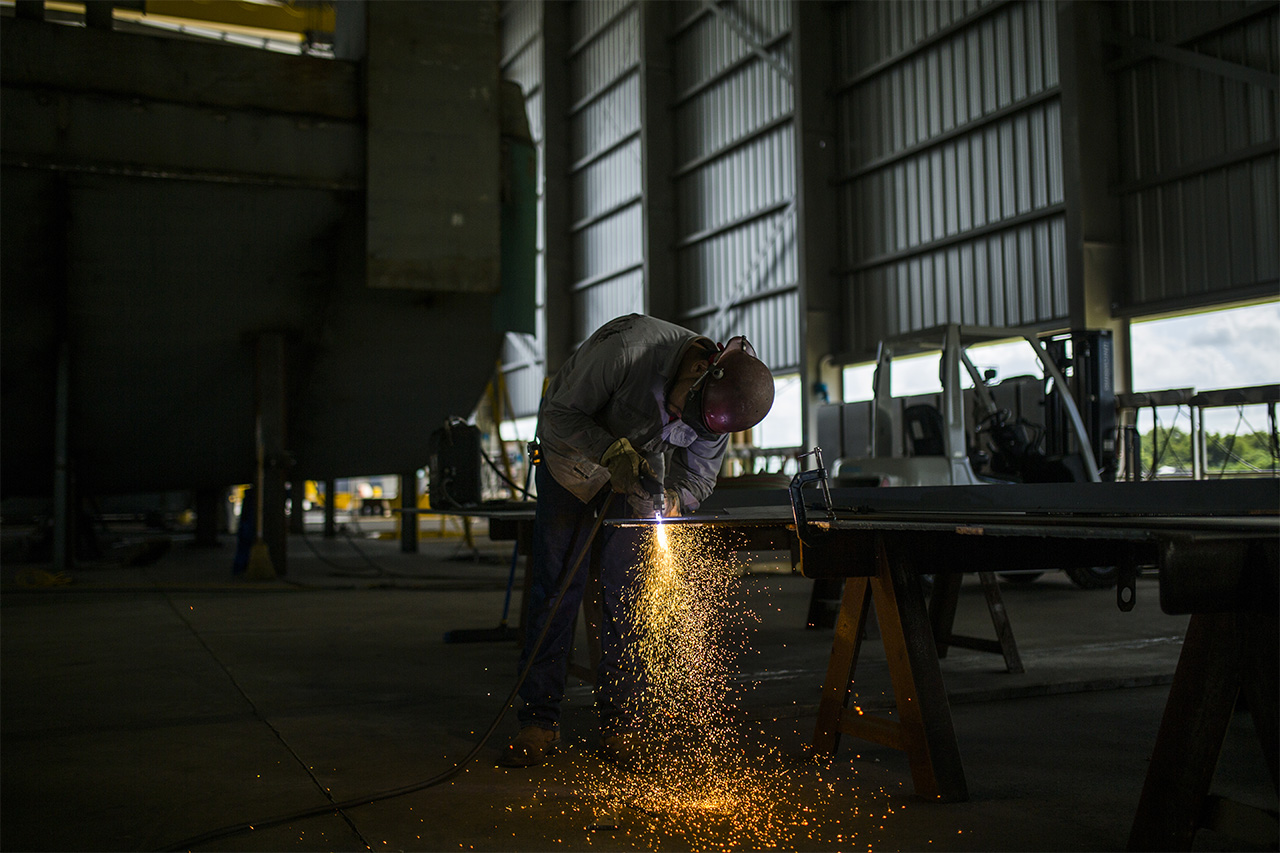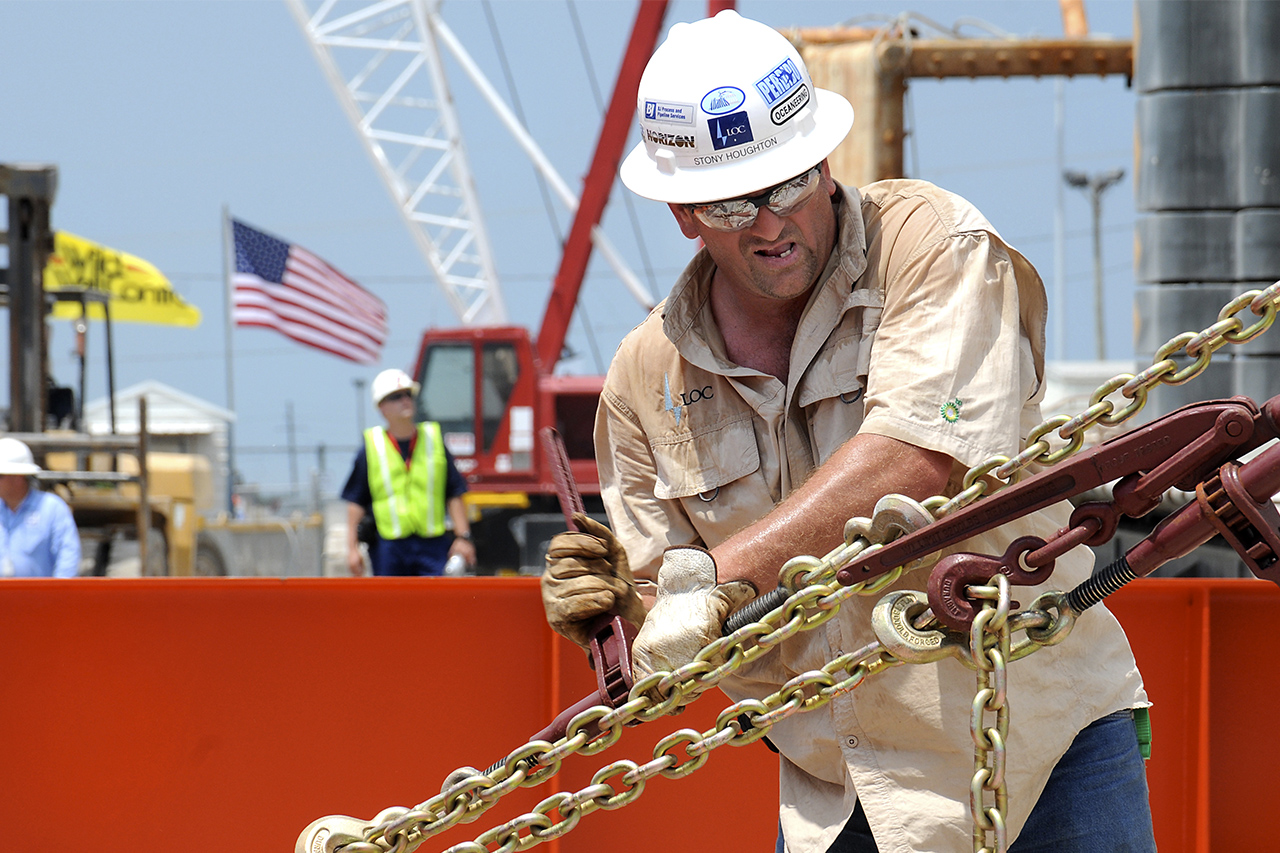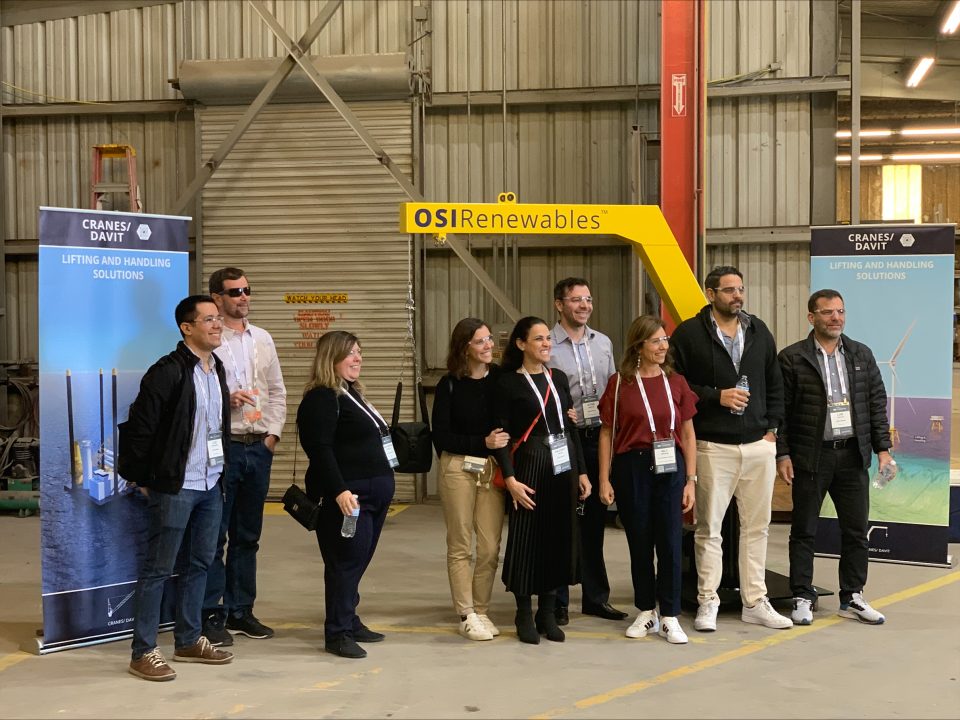
Cenac Expands His Grandfather’s Vision
May 15, 2019
Many Mouths to Feed
May 15, 2019CHIASSON SAYS THERE ARE SIGNS THAT A COMEBACK IS SURFACING
When oil prices were at their peak, there were 65 deepwater rigs drilling in the Gulf of Mexico.
Now, there are a little more than 20.
Obviously, that’s a bone-crushing blow to Port Fourchon, the tenants at the port and, ultimately, the people who are employed by the marine industry in Southeast Louisiana — the root cause of the economic slump our area has been in for the better part of the past half-decade.
But Port Fourchon Executive Director Chett Chiasson said there are real, tangible signs of progress at the port and folks are getting optimistic that oil is about to comeback in a big way in the next 12-18 months.
Chiasson also said that the industry is resilient, applauding the tenants of the port who have stayed committed to the area through all of the struggles of the past several years — a group that he said is hanging on, but fighting daily to stay ahead of the tough economy.
“Business certainly could be better,” Chiasson said. “But we see some resurgence in traffic and vessel activity and things are moving around the port at our tenant facilities. That’s good news. We’re excited about some information we’re hearing and some things we’re seeing coming into 2020 about the potential of a good 2020 going into 2021. That’s positive news for us.”
A couple things happening around the industry are helping give Fourchon a boost, as well.
Scott Angelle, the former Louisiana Lt. Governor and current Director of the United States Bureau of Safety and Environmental Enforcement, recently announced revisions to the United States’ well-control rule — a move which Chiasson said is going to be a game-changer for businesses who do business offshore.
The well control rule was put in place by former President Barack Obama after the Deepwater Horizon Oil Spill. It placed strict regulations on oil companies as a way to ensure safety measures were being met during the process of drilling.
But the regulations and safety requirements were incredibly expensive and burdensome to meet — making it virtually impossible for smaller oil companies to get into the deepwater game. Angelle said the regulations were politically driven, saying that the oil industry is now more efficient, but just as safe.
Chiasson agreed. He said the safety components of the rule are still in place, but some of the regulations are lifted, which will make drilling a cheaper process and, thus, more profitable.
This, he said, will allow Fourchon to be a more competitive port in the global offshore market.
“This removes some of the burdensome regulation in how you drill and explore for oil,” Chiasson said. “That kind of relieves some stress and cost behind drilling without reducing any of the safety factor in any way. Any time you can reduce costs from a business standpoint, that has trickle down effects and it lets us be a more attractive option to companies who are doing business literally all around the world.”
Chiasson said despite some of the slow times, occupancy at the port is good — a constant theme throughout the tough years.
He said all of the port’s waterfront facilities are under lease and there are just 5 smaller landside leases available.
“For us, given the circumstances, that’s a really good number,” he said.
He said Fourchon recently has constructed some new sites, as well, which will allow the port to be ready for the next surge in oil and gas exploration.
“This allows us to be ahead of the game,” Chiasson said. “When people call and say, ‘Hey, is anything available?’ We’re able to say yes.”
But no matter how one slices it — deep down, every expert in the field knows it all comes down to that global price for a barrel of oil.
Chiasson said the current price of just more than $60/barrel isn’t ideal, but is manageable — especially now that the price has stabilized in recent weeks.
“A steady number is good because companies can start to plan,” Chiasson said. “It’s a little easier to forecast and make projections when you know exactly what you’re up against. It’s easier to hit a still target than a moving target.”
Chiasson said the ideal sweet-spot is something around $70/barrel even maybe cheating a little bit upward toward $75/barrel.
Will we get there anytime soon? One can never be certain.
But Chiasson said long-term forecasts being given to industry leaders show the there are opportunities for a pretty significant comeback for oil and gas in the next year — one which hopefully serves as the final blow to the prolonged local struggles.
“I believe we are,” Chiasson said when asked bluntly if there are signs that the port is turning the corner. “Yes, I think it’s coming.” •











